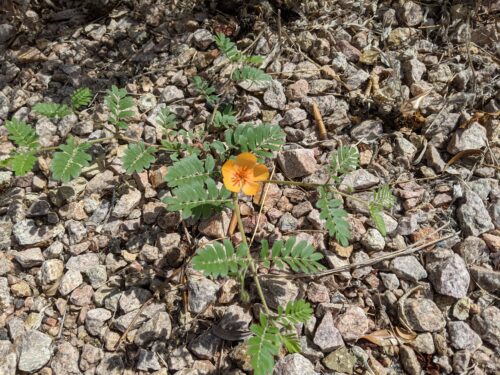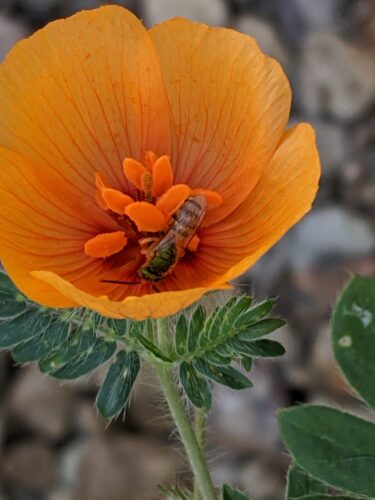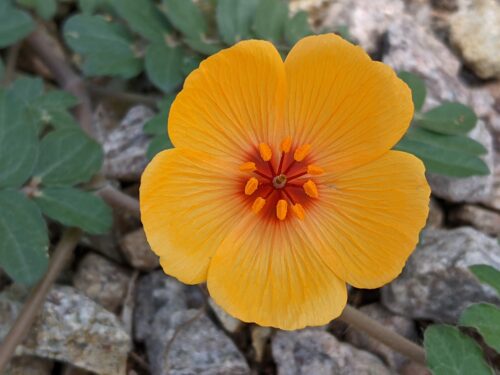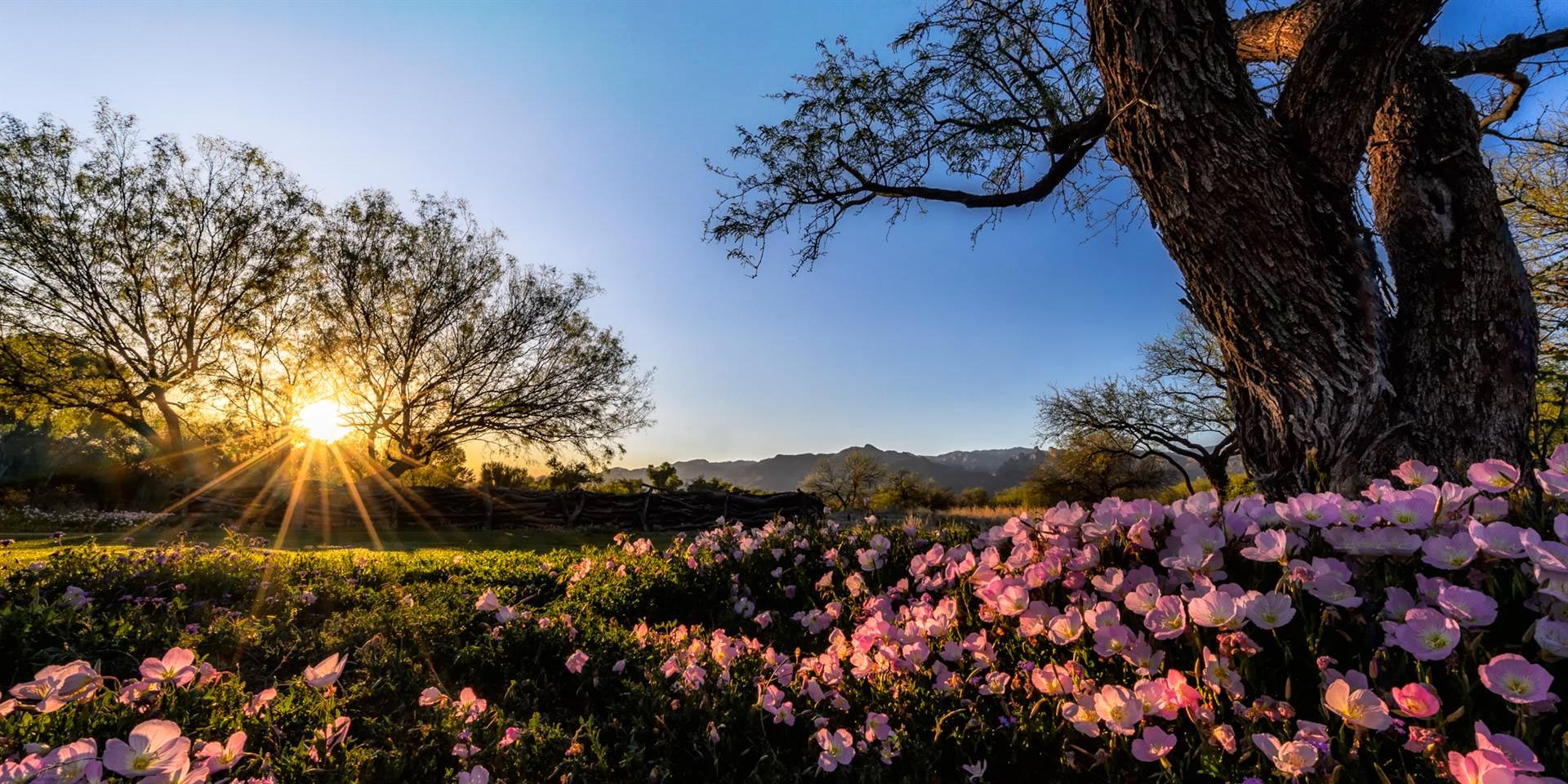Plant Profile: Arizona Poppy
Posted Oct 02, 2021
A Poppy is a Poppy, Right? Meet the Arizona Poppy
By Kathleen M. McCoy, AZNPS Phoenix Chapter Member and Arizona Master Naturalist
On a bright sunny day, with air recently cleansed by a long-awaited monsoon storm, miles and miles of plants loaded with beautiful yellow flowers line the sandy edges of a shallow riverbank to the tops of the nearby hillside. From a distance they seem to be California poppies. A closer look suggests these “poppies” are somewhat different and should not be blossoming at this time of year anyway.
Time to pull out the field guide. Problem solved. The mystery “poppy” is often called the Arizona poppy but is not a poppy at all! Arizona poppy (Kallstroemia grandiflora) is a member of the Caltrop family (Zygophyllaceae) not the Poppy family (Papaveraceae). It is also commonly called Desert poppy, Mexican poppy, or Orange caltrop.

From a distance the California poppy (Eschscholzia californica ssp. mexicana) and the Arizona poppy can easily be confused. Petal color and habitat are similar. Both thrive on open plains, mesas, and desert slopes at elevations below 4,000 feet, although the Arizona poppy is also a fan of roadsides.
However, a closer view reveals that Arizona poppies are not as petite. In fact, most are over 3 feet tall forming masses 2 to 5 feet across. This woody stemmed bush has hairy branches which are slightly sticky, unlike the slender 16-inch California poppy whose tidy leaves of similar length form a circle at the stem’s base. Another identification clue is the leaf. Although leaves of these two plants are similar in size, definite color differences exist. Arizona poppy leaves are very hairy and grayish green, in contrast to California poppy’s pale bluish green leaves.

Blossoming times are also different. California poppy blooms on long naked stems during early spring. Arizona poppy waits for the monsoon rains before the showy blossoms appear. Although both plants have yellow to yellow orange petals, the California poppy dons a 1 ½ inch wide, cup-shaped flower which releases a peppery fragrance. In contrast, Arizona poppy produces many flowers ranging in size from ¾ to 1 ½ inch wide with no obvious scent.
A closer look at the flower will provide unqualified proof of identity. California poppy, which remains open for one day, is usually yellow with 4 petal-like cups, but occasionally can be white or orange. Arizona poppy, regardless of petal color, practically shouts out its identification with a deep red center surrounded by 5 bowl-like petals. The red center reflects ultraviolet rays which attract many invertebrates, such as bees, wasps, flies, and butterflies looking for nectar or pollen.

Birds, especially doves and quails, are attracted to the seeds. Arizona poppy produces copious seeds surrounded by a hardened seed coat. Unless the coat has been broken or scarified, they typically will not sprout for several years. The seeds can remain fertile in the desert for at least 3 years until the monsoons signal it’s time to sprout.
Arizona poppy is a colorful addition to native gardens as well as a plant to aid desert restoration. So, even though the Arizona poppy is not actually a poppy, it produces beautiful flowers during July through Septembers when most other plants have long gone to seed. Now the reply to the question, “A poppy is a poppy, right?” can be answered with “Not if it is Kallstroemia grandiflora!”

Photo credits: Lisa Rivera
Sources:
Arizona State University. (n.d.) Kallstroemia grandiflora. https://www.public.asu.edu/~camartin/plants/Plant%20html%20files/kallstroemiagrandiflora.html
DesertUSA. (2021). Arizona poppy, Kallstroemia grandiflora. https://www.desertusa.com/flowers/az-poppy.html
Lady Bird Johnson Wildlflower Center. (2021). Eschscholzia californica ssp. mexicana. https://www.wildflower.org/plants/result.php?id_plant=ESCAM
Southwest Desert Flora. (2017). Kallstroemia grandiflora, Arizona poppy. http://southwestdesertflora.com/WebsiteFolders/All_Species/Zygophyllaceae/Kallstroemia%20grandiflora,%20Arizona%20Poppy.html

